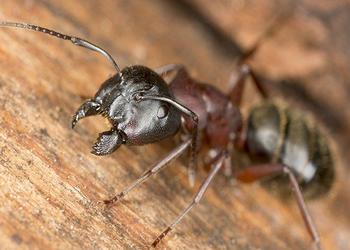More accurate detection of wood pests is essential for reliable pest control services. While other Pests can be annoying, wood-damaging pests are more dangerous. As their name suggests, wood-damaging insects damage wood by tunneling through it to live, in their nests, or feeds. And these destructive pests are quite sneaky. Because of this, they can create enough damage to cause costly repairs to your valuable wooden pieces and property fixtures.
There Are Three Main Irritants Behind the Most Damaging Pests:
Carpenter Bees seek wood in old trees and stumps. However, they can also target wooden houses and buildings. When they do this, their damage is obvious – and somewhat serious in the long run. Carpenter bees do not eat wood; Dig nesting tunnels. The distinctive entry hole, about the size of a fingertip, is almost perfectly round. The bees dig about 1 inch deep and then branch to create side paths for them to spawn. The connected bees stay together, and the offspring add their entry holes and nests each year. There has been great damage over the generations.
Carpenter Ants usually look for dead and rotting trees in the wild, but when homes have damp, rotting wood, carpenter ants settle down. They rarely penetrate dry, hard structures. The first sign of a wood ant attack is a large, dark ant trail leading to your home. A few ants indoors could mean feeding ants from an outdoor nest. A large number of the inside, especially near the window, signal problems. Follow the ant trail for clues about where to nest. Focus on humid areas indoors and outdoors with large dark ants around.
Unlike carpenter bees and carpenter ants, Mites eat the wood they infect. Cellulose from wood or other plants is their main food. As the name suggests, Mites live underground in the soil. They roam the ground to reach trees and rarely enter the field of view. As a result, they often go undetected until major damage is done. Often, the first sign of a termite problem is swarms of winged reproductive termites or groups of wings that they have shed and left behind. Mites nest where wood and moisture are abundant. Look for a corridor of pipes such as sand that runs along the wall or pipe that connects the earth and wood.
How Can I Prevent Wood-damaging Pests in the Future?
Preventing problems with wood-damaging pests can be very difficult. Below Mentioned are the things you can do in and around your home to prevent them:
- Hire a professional wood-damaging pest control service from an efficient pest control services company
- Seal cracks and all the narrow cracks and openings found in your home’s foundation, exterior walls, and spaces found around the washroom, kitchen, and utilities.
- You have to Repair leaky pipes, fixtures, and faucets found inside and outside your home, which are the main cause of this wood- damaging pests
- Remove structural wood from your home and backyard that has been damaged by water.
- Ensure that the wood you have purchased has been dried and properly stored so that it’s not damp.
- You need to Paint exposed bare wood to help prevent wood-boring pests
- Limit the use of old barn wood inside your home.
- Inspect and repair all the antiques made of wood before buying and bringing them to your home and your Farm.
How Do I Get Rid of Wood-damaging Pests?
Quick and effective treatment of wood-damaging pests is essential to prevent damage to your home and property. When pests destroy wood, you can quickly stop them from destroying them. ASM Pest Control helps you protect your home from pests and disturbances so that you and your family can easily rest and return to your home enjoyment. ASM Pest Control provides licensed and efficient pest control services in Lower Mainland.






